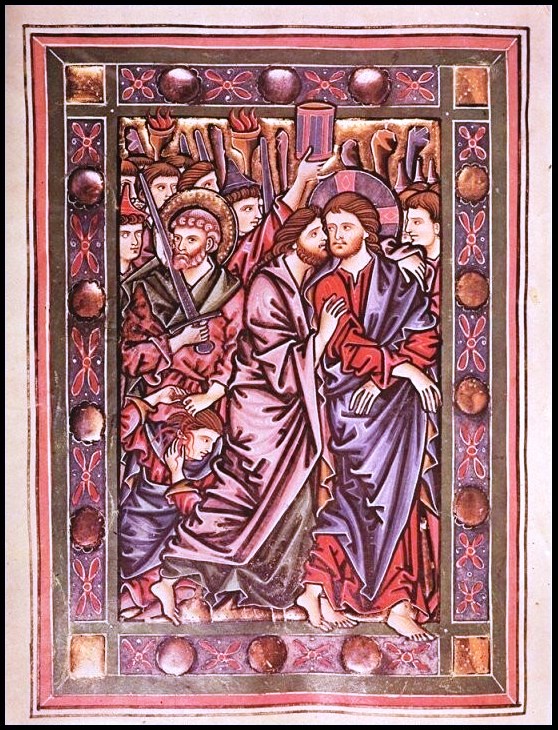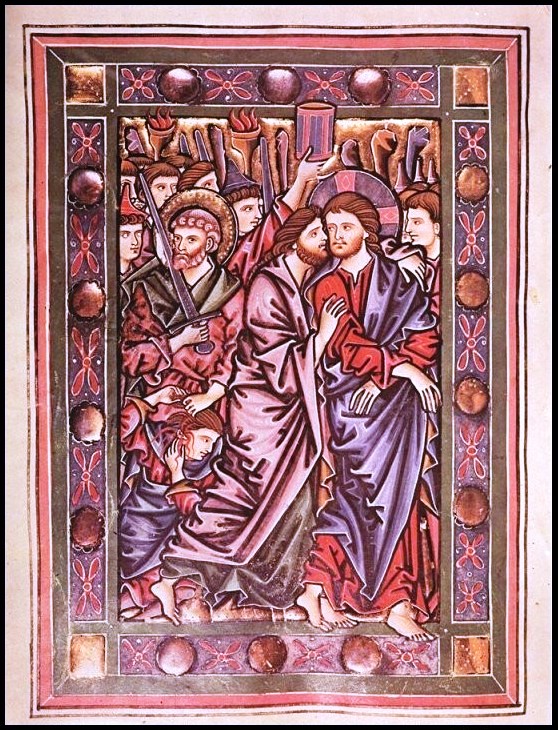 How we might re-establish Catholic traditions in sacred art After my references to Western icons and also my assertion of the importance of re-establishing the gothic style as living traditions, people have been asking me to give examples of the images I am talking about. I am going to do a regular series of features of such examples in order to promote these styles. My hope is that we in the West will follow the remarkable work of the Russians and Greeks who reestablished the iconographic tradition in the Eastern Church in the middle of the 20th century (figures such as Ouspensky and Kontoglou).
The first stage in doing this is the artistic study - copying with understanding - of the works of a past tradition. And then the second stage, if this is to become a truly living tradition, is the creation of new works that are consistent with the core timeless principles of the tradition. The great achievement of our Eastern brethren is to moved through to the second stage. In the West our artistic heritage is richer (in the sense that we not only have iconographic tradition, but also the gothic and the baroque as authentic and complementary sacred art traditions). This means that in once sense, given there are three traditions, the task ahead is greater but in another, because we can follow the methods used by the Russians and Greeks (and more recently Copts with Dr Stephane Rene doing great work) it is less because we can use the principles that they used.
How we might re-establish Catholic traditions in sacred art After my references to Western icons and also my assertion of the importance of re-establishing the gothic style as living traditions, people have been asking me to give examples of the images I am talking about. I am going to do a regular series of features of such examples in order to promote these styles. My hope is that we in the West will follow the remarkable work of the Russians and Greeks who reestablished the iconographic tradition in the Eastern Church in the middle of the 20th century (figures such as Ouspensky and Kontoglou).
The first stage in doing this is the artistic study - copying with understanding - of the works of a past tradition. And then the second stage, if this is to become a truly living tradition, is the creation of new works that are consistent with the core timeless principles of the tradition. The great achievement of our Eastern brethren is to moved through to the second stage. In the West our artistic heritage is richer (in the sense that we not only have iconographic tradition, but also the gothic and the baroque as authentic and complementary sacred art traditions). This means that in once sense, given there are three traditions, the task ahead is greater but in another, because we can follow the methods used by the Russians and Greeks (and more recently Copts with Dr Stephane Rene doing great work) it is less because we can use the principles that they used.
We have made a start at this effort in cultural reform at Thomas More College of Liberal Arts and my classes there now focus on these Western forms. What is interesting is to see how the students take to these forms very happily and seem to enjoy creating them. As a result they are producing some of the best work I have seen students of mine produce. (I will post some of their work at the end of the semester once they have finished their projects). My sense is that just seems more natural to us Western Catholics to paint like images like this than to paint Eastern icons. Similarly, the Way of Beauty Summer Atelier (see here for details), which is offering an icon-painting summer school will focus on these forms, which come from illuminated manuscripts. These are excellent examples to study if you are a beginner because they are strongly line based, rather than relying on the modelling of form through gradual blening of tone and colour. This latter requires sophisticated handling of the paint which is very difficult in egg tempera, the medium used. We use egg tempera paint on high quality watercolour paper to replicate these manuscript images.
The image shown here is a remarkable plate from a 13th-century German psalter. Rheinau is the town in Germany where it was created. The artist's name is unkown. It is consistent with the iconographic prototype. The draughtsmanship is wonderful. I love the contrast between the sure smooth flow of the lines that describe the human forms, which contrast with the vigorous angular handling of those lines which describe the drapery. Artists today could learn from this, because this use of a faceting in the description of drapery helps to give the image a greater strength and less sentimental feel. Sentimentality is the scourge of modern sacred art. This device is not limited to iconographic or gothic art - even Bernini used it when he sculpted drapery in the baroque era. Note also how the Rheinau image conforms to the Western preference for patterned borders (which is not unknown but certainly less common in the Eastern variants).
Some might question the ideas this is iconographic by pointing the fact that some of the figures are in profile (not seen in icons usually). However, it seems to me that the artist is being selective in accordance with the iconographic convention. The two figures who have halos, Christ and St Peter are not in profile. All the other figures, with Judas most prominent, are part of the crowd of men who are arresting Christ. These are not saints and so this is indicated not only by the absense of halos but also by drawing them in profile.


